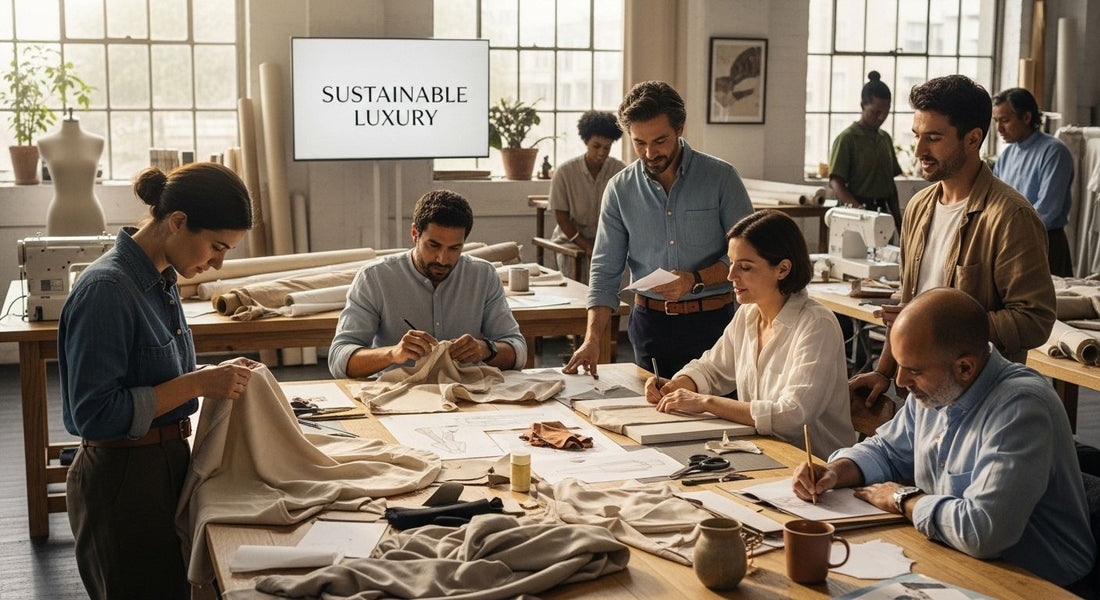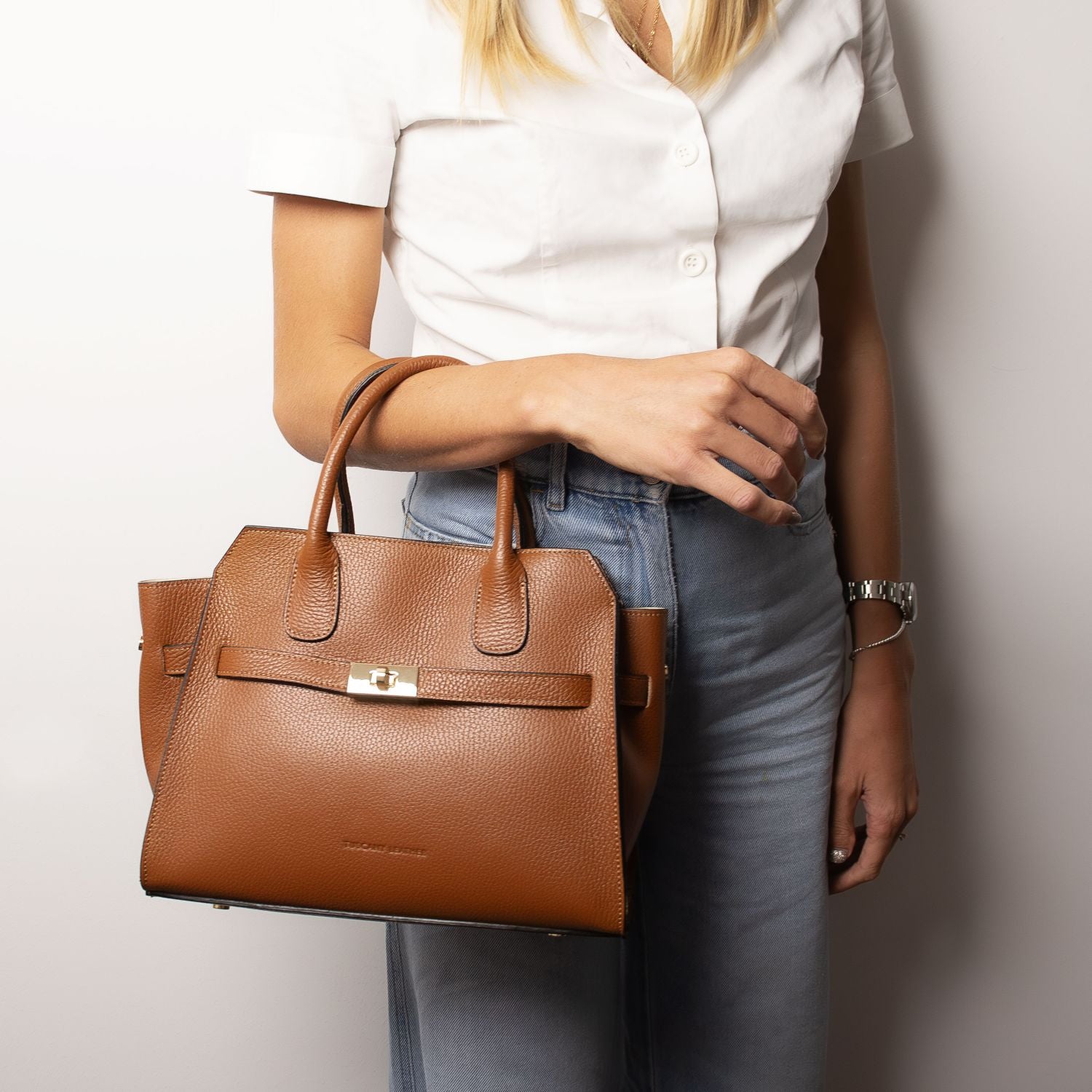
Understanding Sustainable Luxury Fashion: A Comprehensive Guide
Share

Luxury fashion is often seen as all about glamour and exclusivity. Yet here is a number few expect to see attached to high-end style. Textile production creates more carbon emissions than international shipping and aviation combined. That flips the script on what luxury really means. Now, sustainable luxury fashion is winning over both designers and shoppers by proving that true sophistication can care for people and planet at the same time.
Table of Contents
- What Is Sustainable Luxury Fashion?
- Why Sustainable Luxury Fashion Matters
- How Sustainable Luxury Fashion Works
- Key Concepts In Sustainable Luxury Fashion
- The Future Of Sustainable Luxury Fashion
Quick Summary
| Takeaway | Explanation |
|---|---|
| Sustainable luxury prioritises ethics and transparency | This fashion approach integrates environmental and social responsibility into luxury clothing production. |
| Focus on responsible material sourcing | Brands use organic, recycled, and regenerative materials to minimise ecological harm. |
| Circular economy model enhances product lifecycle | Designs reflect longevity, enabling reuse, recycling, and less waste throughout their life. |
| Technological innovations drive sustainable practices | Advancements like AI and blockchain enhance efficiency and transparency in production. |
| Consumer demand shapes industry transformation | Modern luxury buyers seek sustainability, influencing brands to adopt responsible practices. |
What is Sustainable Luxury Fashion?
Sustainable luxury fashion represents a profound transformation in the high-end fashion industry, merging exceptional quality and design with environmental responsibility and ethical production practices. This emerging approach challenges traditional luxury fashion paradigms by prioritising transparency, social accountability, and ecological preservation throughout the entire design and manufacturing process.
Defining Sustainable Luxury Fashion
At its core, sustainable luxury fashion goes beyond aesthetic appeal and exclusivity. According to research from Sustainability journal, it encompasses a holistic approach that integrates environmental consciousness, social responsibility, and superior craftsmanship. Key characteristics include:
- Using responsibly sourced, low-impact materials
- Ensuring ethical working conditions for artisans
- Minimising carbon footprint during production
- Creating long-lasting, timeless design pieces
- Promoting transparency in supply chain operations
The Philosophical Shift in Luxury Production
Traditionally, luxury fashion focused exclusively on premium materials and exquisite design. Sustainable luxury fashion reimagines this model by acknowledging the broader impact of clothing production. This approach recognises that true luxury extends beyond personal consumption to include environmental stewardship and social equity.
The philosophy underpinning sustainable luxury fashion recognises that exceptional quality can coexist with ecological mindfulness. Artisans and designers are now exploring innovative techniques that reduce waste, utilise regenerative materials, and create products with extended lifecycles. By prioritising craftsmanship that respects both human and environmental resources, sustainable luxury fashion represents a sophisticated evolution of traditional luxury principles.
To clarify the essential dimensions of sustainable luxury fashion, the following table compares traditional luxury fashion with its sustainable counterpart across key areas discussed in the article.
| Aspect | Traditional Luxury Fashion | Sustainable Luxury Fashion |
|---|---|---|
| Material Sourcing | Focus on premium, exclusive materials, sometimes with little regard for origin | Emphasis on responsibly sourced, organic, recycled, or regenerative materials |
| Manufacturing Approach | Prioritises craftsmanship and prestige, may overlook environmental and social impacts | Integrates ethical production, transparency, and minimising carbon footprint |
| Environmental Impact | Often disregards ecological effects, can generate significant waste and emissions | Minimises carbon footprint, reduces waste, prioritises conservation |
| Social Responsibility | Limited focus on worker welfare and supply chain transparency | Ensures Fair wages, safe conditions, artisan empowerment, and community support |
| Product Longevity | Focus on design excellence, not always built for extended lifecycle | Designs for durability, repair, and multiple lifecycles in line with circular economy principles |
| Transparency | Rarely discloses full supply chain or production impacts | Provides open information on sourcing, manufacturing, and overall impact |
Why Sustainable Luxury Fashion Matters
Sustainable luxury fashion transcends aesthetic trends, representing a critical response to the profound environmental and social challenges created by traditional fashion production. This approach addresses urgent global concerns while redefining the meaning of true luxury in the 21st century.
Environmental Impact and Conservation
The fashion industry is a significant contributor to global environmental degradation. According to research from McKinsey & Company, textile production generates more carbon emissions than international shipping and aviation combined. Sustainable luxury fashion offers a transformative solution by:

- Reducing carbon footprint through responsible manufacturing
- Minimising waste through circular design principles
- Protecting biodiversity by using regenerative materials
- Conserving water resources in production processes
- Limiting chemical pollution from textile manufacturing
Social Responsibility and Ethical Production
Beyond environmental concerns, sustainable luxury fashion addresses critical social issues within global supply chains. Ethical production means ensuring safe working conditions, Fair wages, and respect for artisan communities. This approach challenges the historical exploitation prevalent in fashion manufacturing, creating a more equitable and transparent industry that values human dignity alongside craftsmanship.
By supporting sustainable luxury fashion, consumers become active participants in a global movement towards more responsible consumption. Each purchasing decision becomes an opportunity to support environmental preservation, support skilled artisans, and challenge unsustainable industry practices. The movement represents more than a trend it is a fundamental reimagining of fashion’s role in creating a more just and sustainable world.
How Sustainable Luxury Fashion Works
Sustainable luxury fashion operates through a comprehensive approach that reimagines traditional production processes, integrating advanced technologies, innovative materials, and ethical practices to create high-quality products with minimal environmental impact.
Material Selection and Sourcing
The foundation of sustainable luxury fashion lies in strategic material selection. According to research from MDPI’s Sustainability journal, brands prioritise materials that minimise ecological harm while maintaining exceptional quality. This involves:
- Utilising organic, recycled, and regenerative fibres
- Selecting materials with low water and carbon footprints
- Ensuring transparent and traceable supply chains
- Supporting agricultural practices that restore ecosystems
- Avoiding materials linked to environmental degradation
Production and Manufacturing Techniques
Sustainable luxury fashion employs advanced manufacturing techniques that dramatically reduce environmental impact. Artisans and designers focus on circular design principles, which means creating products intended to be reused, recycled, or biodegraded. This approach includes precision cutting to minimise textile waste, using renewable energy in production facilities, and implementing water-efficient dyeing processes.
This table summarises core features and practices used in sustainable luxury fashion production, offering a clear overview of strategies highlighted in the article.
| Feature or Practice | Description |
|---|---|
| Responsible Material Selection | Use of organic, recycled, and regenerative fibres to limit ecological harm |
| Transparent Supply Chains | Documented sourcing paths and traceability from raw material to finished product |
| Ethical Working Conditions | Safe environments, Fair wages, and community respect for all artisans involved |
| Circular Design Principles | Creation of garments intended for reuse, recycling, or biodegradation to reduce waste |
| Advanced Manufacturing Technologies | Adoption of 3D design, digital prototyping, and AI optimisation to minimise physical waste |
| Water and Energy Efficiency | Implementation of water-saving dyeing and renewable energy in production processes |
| Product Longevity | Focus on timeless design and durability for a prolonged lifecycle |
Technological innovations play a crucial role in transforming manufacturing. Advanced 3D design tools allow designers to prototype digitally, reducing physical waste. Artificial intelligence helps optimise material usage, while blockchain technology enables unprecedented transparency in tracking a product’s entire lifecycle from raw material to finished garment.
Key Concepts in Sustainable Luxury Fashion
Sustainable luxury fashion represents a sophisticated approach that integrates sophisticated design principles with ecological consciousness, challenging traditional fashion production models and redefining luxury consumption.
Circular Economy and Product Lifecycle
The circular economy model stands at the heart of sustainable luxury fashion. According to research from London Business School, this concept transforms how luxury brands conceptualise product design and consumption. Key principles include:
- Designing products for longevity and multiple lifecycle stages
- Creating repair and refurbishment opportunities
- Implementing take-back and recycling programmes
- Minimising waste through intelligent design strategies
- Encouraging consumers to view fashion as an investment
Transparency and Ethical Accountability
Transparency has become a fundamental expectation in sustainable luxury fashion. Brands are increasingly required to provide comprehensive information about their production processes, material sourcing, and environmental impact. This means going beyond traditional marketing narratives to offer genuine insights into manufacturing practices, worker conditions, and carbon footprint.
Ethical accountability extends beyond environmental considerations to include social responsibility. Sustainable luxury fashion champions artisan skills, supports local communities, and ensures Fair wages and safe working conditions. By prioritising human dignity alongside ecological preservation, these brands create a more holistic understanding of luxury that values both craftsmanship and global well-being.
The Future of Sustainable Luxury Fashion
Sustainable luxury fashion is rapidly transforming from a niche concept to a fundamental industry paradigm, driven by technological innovations, changing consumer expectations, and urgent environmental imperatives. This evolution represents a profound reimagining of luxury production and consumption.
Technological Innovations and Emerging Trends
Technology will play a pivotal role in shaping sustainable luxury fashion’s future. According to research from Future Business Journal, emerging trends demonstrate significant potential for transformative change. Key technological developments include:
- Advanced biomaterial research
- Artificial intelligence for supply chain optimisation
- Blockchain technologies ensuring product traceability
- Digital design tools reducing physical prototype waste
- Virtual reality enabling sustainable product experiences
Consumer Behaviour and Market Transformation
Consumer expectations are driving fundamental shifts in luxury fashion. While design and brand prestige remain critical, sustainability is increasingly becoming a core value. Modern luxury consumers seek products that reflect their personal ethics, demanding transparency, authenticity, and genuine commitment to environmental and social responsibility.
The future of sustainable luxury fashion will not be about compromising aesthetic excellence but about reimagining luxury as a holistic concept that harmonises exceptional design, technological innovation, and ecological stewardship. Brands that successfully integrate these principles will define the next generation of luxury, creating products that are not just beautiful, but meaningful and responsible.

Experience Sustainable Luxury With Authentic Craftsmanship
If learning about sustainable luxury fashion has inspired you to search for true quality and ethical elegance, you are not alone. Many readers want fashion that genuinely respects the planet, supports skilled artisans, and stands the test of time. Yet it is difficult to find creations that blend timeless design, traceable heritage and lasting value, rather than products of fast fashion. At San Rocco Italia, these values are at the heart of everything we offer. Our carefully curated collection features luxury handbags and accessories made from the finest full-grain leather, hand-crafted by Italian artisans who are paid fairly for their expertise. Embrace the philosophy of transparency in supply chains and exceptional craftsmanship by choosing pieces that honour both people and planet.

Take the next step towards meaningful luxury today. Explore our refined selection of ethical handbags, curated accessories and thoughtfully sourced home décor at San Rocco Italia. Let your purchase celebrate both your commitment to sustainability and your appreciation for timeless sophistication. Transform what you wear and cherish into a positive statement for a better world.
Frequently Asked Questions
What defines sustainable luxury fashion?
Sustainable luxury fashion is defined by its commitment to environmental consciousness, social responsibility, and superior craftsmanship. It includes the use of responsibly sourced materials, ethical working conditions, and a focus on creating long-lasting, timeless pieces.
Why is sustainable luxury fashion important?
Sustainable luxury fashion is important because it addresses environmental degradation and social issues arising from traditional fashion production. It promotes responsible consumption, environmental stewardship, and social equity, reflecting a transformative shift in luxury values.
How does material selection impact sustainable luxury fashion?
Material selection is critical in sustainable luxury fashion as it prioritises low-impact, responsibly sourced fibres. This includes organic, recycled, and regenerative materials that minimise ecological harm while ensuring high quality and durability in fashion products.
What role does technology play in sustainable luxury fashion?
Technology plays a significant role in sustainable luxury fashion by enabling advanced manufacturing techniques, optimising supply chains, and enhancing product traceability. Innovations such as 3D design tools, artificial intelligence, and blockchain technology help reduce waste and improve transparency in the fashion industry.


